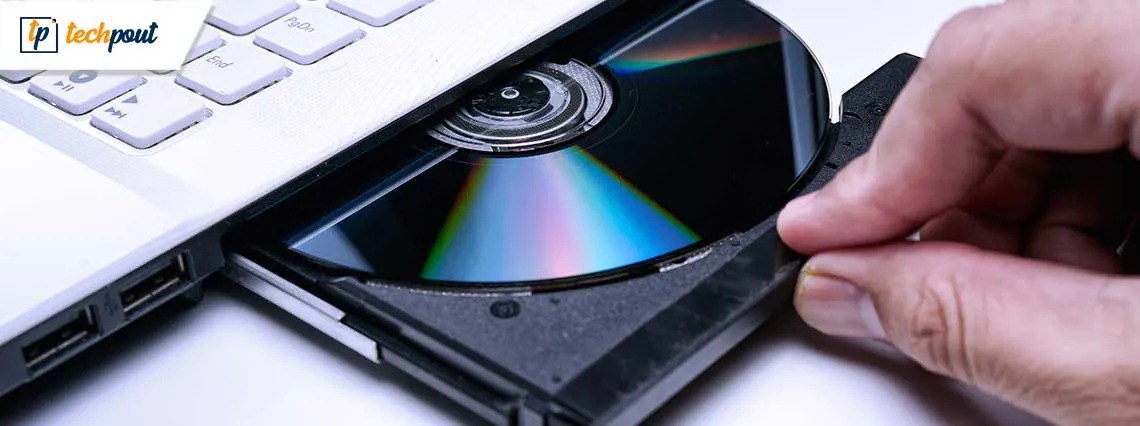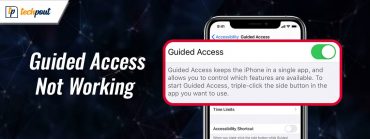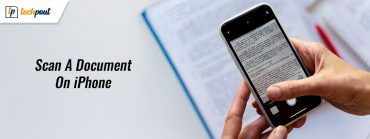How to Boot from a USB Drive, DVD or CD?

If you wish to boot from Windows 10 USB, DVD, or CD, then you can take the help of the procedure explained in this guide to do the same without facing any errors.
As you may already know, to install an operating system on your electronic device, you need to take the help of a bootable device. This bootable device can be a USB, CD, DVD, or any other external storage device. We may need to resit all or install a new operating system on your computer due to several reasons that can include slow performing operating system, offering a fresh start to the PC, or otherwise.
In this guide, we will learn everything you need to know about USB boot on Windows 10. We will cover everything from the definition of a bootable device to how to install the new operating system using the said bootable device with ease. So, let’s get started without any further ado.
What Do You Mean By a USB Drive for Booting?
A bootable USB drive is a device that has been formatted and enabled with software to enable your computer to start up from any external storage device, such as a USB drive. This kind of disk is also known as a bootable USB drive. You could find this handy in circumstances in which you are unable to access the operating system that is installed on your computer, whether it be because of technical problems or for some other reason.
This will allow you to build a bootable USB drive. Following the successful completion of the formatting process, you will be able to unplug the drive and use it in the same manner as any other external storage device when you attach it to another workstation.
Selecting “Boot from USB” when offered during start-up will allow your computer to run the operating system or applications that you have selected from the flash drive. Once the flash drive is attached, just pick this option. However, you will need to download the ISO image of the operating system or software that you wish to use onto your own computer, and then you will need to use a program like Rufus to install it onto the USB device.
Let’s understand about such tools that can help in booting a bit.
Also know: Microsoft USB Driver Download and Update for Windows 10, 11 (Free)
What is USB Booting Software or USB Bootable Software?
Let’s understand the meaning of USB bootable software with the help of an example. Rufus is the greatest USB bootable program that allows you to boot the USB without any problem in order to install an operating system. It is open-source and free while also being the best.
In addition, Rufus is one of the greatest free booting software programs available, and it gives you the ability to change partition schemes, cluster sizes, and file systems. Additionally, you are able to evaluate the USB drive for any problematic blocks and remove them with the use of this program.
In addition, you may use Rufus to flash the internal operating system and firmware, as well as to execute low-level utilities. The fact that Rufus is a portable USB bootable software means that it does not need to be installed. This is the icing on the cake.
So, that’s all about the software to boot from Windows 10 through USB. You need to understand how to use this software to create a bootable device. We will get to it but first, you need to learn a bit about NTFS and FAT32.
The Big Question: Which to Choose between NTFS and FAT32 for Booting?
When you try to boot a drive, any software will ask you to select the type of driver to be created. You will have two options viz. NTFS and FAT32. In the first place, you need to be aware of what each format stands for in order to choose the appropriate format for your bootable media. Find out more about them down below.
NTFS is a journaling file system that is an exclusive proprietary system that is the default for Windows NT. It is also compatible with Linux and BSD. The maximum cluster size is 2 megabytes in NTFS, while the maximum file size is 8 terabytes, and the maximum volume size is 8 terabytes.
Whereas,
The file allocation table (FAT) format is available in a 32-bit variant known as FAT32 to perform its function. USBs, external hard disk drives, and flash drives are all compatible with it. It is compatible with practically all systems and devices. The maximum file size is 4 gigabytes, while the maximum cluster size is 64 kilograms, and the maximum volume size is 16 terabytes.
Now that you know about the types of drives, you can move ahead and have a look at the procedure for using the Rufus software to USB boot Windows 10.
How to Create a Bootable USB Drive Using Rufus?
Utilizing software to create a bootable disk to boot from USB Win 10, is a more straightforward process than any other approach described anywhere. Rufus is a program that may be used to build a bootable disk for your Windows 10 computer. Utilizing the Rufus software and the steps provided below, you may create a bootable USB drive.
- Firstly, download the ISO image for the operating system that you wish to install. There are multiple reliable platforms, including the official website of the manufacturer, that will allow you to download the ISO image for free.
- Now, get the software by going to the official website for Rufus and downloading it.
- Click on the rufus.exe file and open it.
- The user interface of the program will pop up, at which point you should plug in your USB.
- After that, locate the option to create a bootable USB drive and choose an ISO Image from the drop-down menu that becomes available.
- Now, you need to choose the partition type as MBR (for low-end OS) or GPT (for high-end OS).
- After that, you will need to pick the Windows 10 ISO folder that you wish to install by clicking on the button that is located next to the drop-down menu.
- At long last, choose the Start option and wait for the creation of the bootable USB drive to take place.
Also know: Best Free Partition Software
Once the process is completed, the tool will state that the device is successfully booted and ready for use. Now that you have a USB drive that is capable of booting, you should insert it into your device and make sure that the BIOS is set properly. After completing all of these procedures that were discussed before, you will be prepared to boot with USB Windows 10 using a storage drive that is capable of booting.
How to Boot from USB Win 10?
Now that you know everything there is to boot the USB device, let’s turn over to the section that will allow you to USB boot Windows 10 using the drive of your choice. Follow the steps below to learn more:
- Stick in the USB drive, DVD, or CD to the respective port for the drive and restart the system.
- The majority of the time, the BIOS will not be automatically configured to your device without your intervention. Leaving this step out may cause your computer to start up from your hard drive on a regular basis, rather than receiving boot information from your USB device. So, restart the system and press the F11 or F8 key to enter the boot menu.
- There are occasions when USB drives will send a message to the user, instructing them to hit a button before the computer will boot from the USB device. In the event that this happens and you do not take any action in response, your personal computer will attempt to boot from the next available option in the sequence listed by the BIOS.
In the majority of instances, the next available choice would be your hard disk. It is possible that you will not see any notification requesting that you press a key while you are starting from a USB disk. In most cases, it is a process that begins on its own.
- Now, you will come across the boot settings of the operating system. These settings are highly varied and hence, different for individual operating systems. You need to proceed with caution and make the required changes to install the desired operating system with the desired settings.
- You will also be asked to allow or create new partitions or use existing partitions for storage and OS installation. Proceed as you want to and format the partition is required.
- Follow the on-screen instructions that appear to complete the installation of the operating system.
Also know: Best Free Partition Recovery Software for Windows
What is the Duration of the Boot from Windows 10 through USB?
According to the speed of your computer and the size of the ISO image that you are trying to execute, the process of booting from your USB drive may take anywhere from a few seconds to several minutes. This is because the procedure is dependent on both of these factors.
In general, more recent PCs that are equipped with adequate technology should be able to start up in anywhere between ten and fifteen seconds, however, older systems may take anywhere from thirty to sixty seconds in some circumstances. After the computer has been powered up, you will be able to begin utilizing the software or operating system of your choice as you normally would.
When you shut down or restart your computer, all of the data will be wiped clean and will revert to its former condition. It is crucial to keep in mind that any changes that are done during this time period are just temporary.
Summing Up: How to Boot with USB on Windows 10?
So, that’s how you can easily USB boot Windows 10. The above-provided process works for all kinds of booting devices including USB drives, DVDs, CDs, and otherwise. It is advised that you follow these steps closely and execute them accurately to protect your files from deletion and other system errors. If you want our help to boot from USB Win 10, then you can seek assistance from us using the comments section below.


